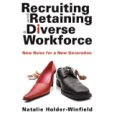 Two news items this afternoon on women, work, and life:
Two news items this afternoon on women, work, and life:
Women Have Another Who Understands
8/28/08 Denver Post: Hours before Michelle Obama’s big speech, she watched the “Cosby Show” cast reunited on Oprah to discuss how their sitcom gave the country its first glimpse at an educated, career-oriented black mom. “Americans didn’t believe there were black families with two professionals,” Michelle Obama says. “Sometimes, I feel that people don’t believe I exist.” After her speech, it would be tough not to believe in the authenticity of Michelle Obama. And after talking with her the next morning, I’m struck by how far we’ve come since 1992 when Hillary Rodham Clinton dissed half the women in America by saying, “You know, I suppose I could have stayed home and baked cookies.” Obama gets the complicated tug….Read the rest
And an odd yet slightly interesting little item on housework:
Women Might Like Being Housewives, But Not Every Day
8/28/08, Telegraph, UK: Feminists got it wrong. Women don’t want to be bread-winners; they want to stay at home and bake bread. This, at least, is the view of The Yorkshire Building Society, that well known repository of expertise on gender psychology/publicity-mongering. The key element to all of this is choice. Scrubbing floors has a therapeutic value as a contrast to a week of sedentary desk-based toil; compulsion would take the shine off, in more ways than one…Read the rest










